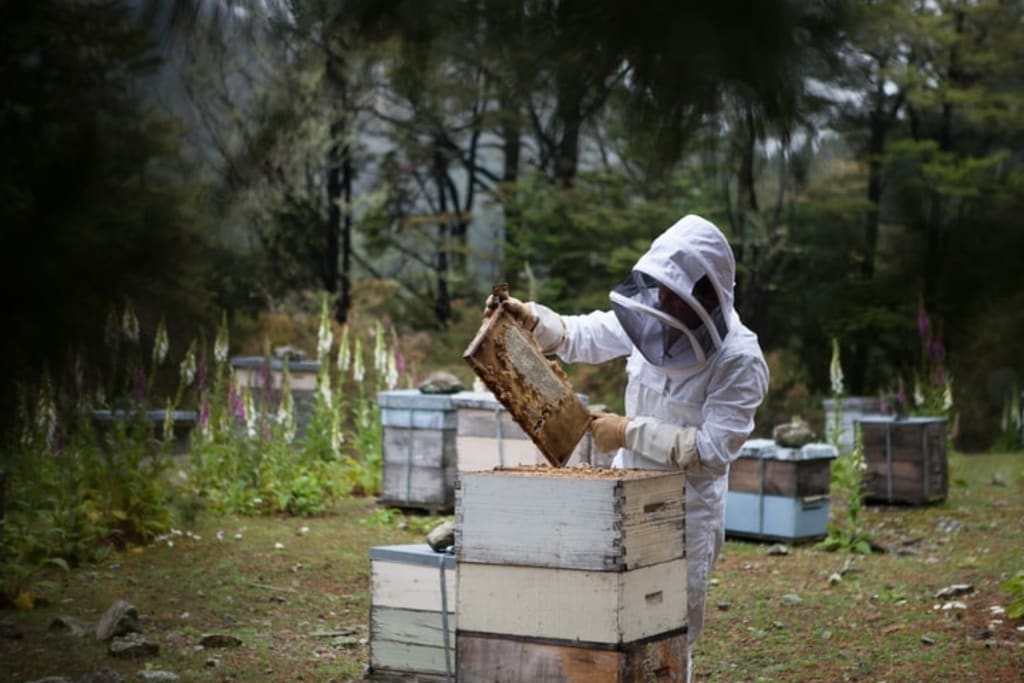Neonicotinoids: A Bee’s Death Sentence
The chemicals that are killing of a vital species

For the past couple of years, rising allegations from environmental groups have accused The Environmental Protection Agency (EPA) and the agricultural industry of lackadaisical environmental regulations and poor Agriculture practices, which are triggering a collapse of colonies in the wake of the most recent demising in bees.
Since 1869 bee colonies have been collapsing at a natural rate, until the 1970s when researchers started seeing an increase in unknown colony disappearing. In 2004 and 2005 beekeepers witness catastrophic loss in bee colonies, allegedly attributed to the varroa mites even though there was no evidence to show they caused the extreme decline. At the beginning of 2007 many beekeepers in the United States had reported a 30 to 90% loss of their colonies, and several European countries had also reported similar declines larger than 50% in their bee colonies. When beekeepers witness the collapse of their colonies, they noticed that the bees were not dying but rather disappearing from the hives. Finding only a queen and a few drones in the collapsing hive. Researchers coined this phenomenon as “Colony Collapse Disorder” due the collapsing nature hives experience when most of the worker bees vanish.
For several years no one knew what was the main factor causing CCD, (Colony Collapse Disorder) until 2010 when scientists discovered a link between CCD and Neonicotinoids. Neonicotinoids or “Neonics” are a type of insecticides that are similar to nicotine, the insecticide attacks a bee’s central nervous system causing the bee to be disoriented making impossible for the bee to return to the hive, or causing the bee to become paralyzed and die from over exposure with the contaminated plants. Neonics are not just sprayed onto the plant like other insecticides, plants can also be treated with the insecticide when they are just seeds; causing the plant to have the active insecticide in them until the plant dies. The neonicotinoid class of insecticides first got on the market with the introduction of a Imidacloprid in the 1980s by a company named Bayer AG, who is best known for the manufacturing of a common household NSAID called aspirin. The insecticide was produced under their crop science division, for the purpose of lowering the harmfully toxic effects that many prior insecticides had on mammals. Imidacloprid saw wide spread use in the 1990s, becoming the most used insecticide in the world. Most recently Bayer AG produced a new neonicotinoid called Clothianidin after Imidacloprid lost patent, as another alternative to organophosphates and carbamates which pose a threat to humans because of high levels of cholinergic poisoning for any animal who had a long exposure to the chemical.
The problem with neonicotinoids like Clothianidin is that they are non-target killer insecticides, as in they kill or harm non-targeted species and animals. Just as organophosphates harm non-targets animals such as humans, dogs and other mammals, Clothianidin harms and kills non-destructive insects called pollinators like butterflies, wasps and most importantly bees. They help plants in the natural pollinating process, and agriculture by going from plant to plant exchanging genetic diversity in the crop from pollen. Honeybees colonies are contracted out by beekeepers, Saving farmers millions in pollinating services; a 28–122 million to be exact. Honeybees pollinate roughly around a third of all the world’s food. Almonds, apples, peaches and cauliflower are all possible because of honey bees, otherwise farmers would have to contract out people to pollinate the food by hand. Which is very costly and time consuming compared to the bee’s ability to fly an average of 15 miles per hour and carry 100 pounds of pollen a season makes human pollination ultimately inefficient. With the growing demand for food around the world due to the population increasing by 75 million each year. the bee’s power of one worker bee pollinating 300 flowering plants a day is essential to agriculture, because if you multiply the number of plants being by the average number of worker bees in a colony. There would be the potential of 10,000 to 40,000 plants pollinated a day.
If bees disappear it could be devastating to agriculture around the world and to local and global economies, the grocery market would half of all its items to buy. Your choices in retail clothing stores would also become very limited, since bees (especially bumblebees) pollinate the majority of all cotton crops around world; and 80% of all menswear is made from cotton and women’s around 40–60% in cotton blend form. The departure of the humble bee like the “bumblebee” would cause a raise the cost of the items in your fridge, as well as your wardrobe. Sadly, in the early hours of Wednesday, January 11th 2017, the United States Fish and Wildlife Services listed the “Rusty Patch Bumblebee” on the Endangered Species list, after a long, harsh battle in the legal system. The Rusty Patch bumblebee became the first bee to be listed in the contiguous United States, due to habitat loss and a 90% dwindling in populations from parasite invasions and most notably the heavy use of Neonicotinoids. It is fortunate that the bee now has it’s much needed protection status from the federal government, but that protection may be brief, as the use of Neonicotinoids has increased by 15x in the last several years and many organizations like “The American Petroleum Institute” seek to dismantle the Endangered species act’s (ESA) supposedly restrictive regulations.
The fragile bees are fighting a war for their survival at all fronts: from the violent assault on ESA by the Corporate armada, to the grossly negligent assessment of insecticides like Neonicotinoids at the hands of the Environmental Protection Agency(EPA). The EPA conducts a registration review phase for all pesticides, that lasts for a fifteen-year period. But before the EPA could conclude their review, they granted Bayer AG’s Clothianidin to have conditional approval, (which happens when a pesticide meets all criterion but does not have a sufficient data on their effects.) causing Clothianidin be used like a fully registered pesticide and available for use around the nation for years; until 2008 when the EPA the open dockets to evaluate the harm of Imidacloprid, a few years later in 2012 they opened dockets for Clothianidin, and its other Neonicotinoids brethren because of a link they found between the class of pesticides and the environment, mainly bees.






Comments
There are no comments for this story
Be the first to respond and start the conversation.